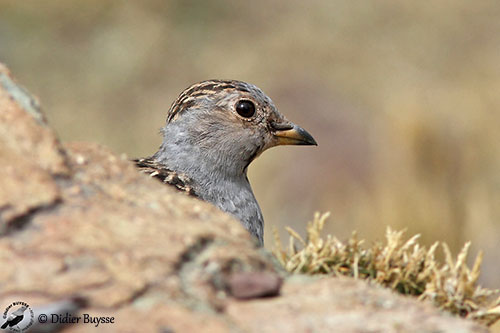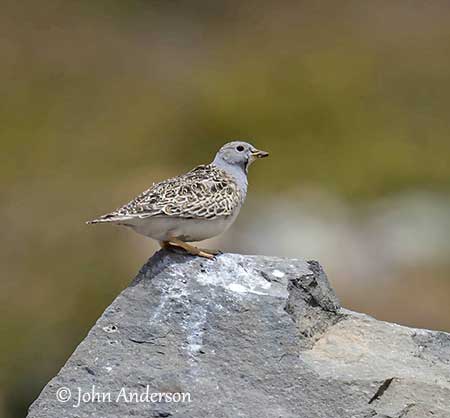
Fr: Thinocore d’Orbigny
Ang: Grey-breasted Seedsnipe
All: Graubrust-Höhenläufer
Esp: Agachona Mediana - Perdicita Cojón
Ita: Tinocoro pettogrigio
Nd: Punakwartelsnip
Sd: gråbröstad frösnäppa
Photographers:
John Anderson
John Anderson Photo Galleries
Didier Buysse
Vision d’Oiseaux
Dubi Shapiro
Dubi Shapiro Photo Galleries & Dubi Shapiro's Pictures on IBC
Text by Nicole Bouglouan
Sources:
HANDBOOK OF THE BIRDS OF THE WORLD Vol 3 by Josep del Hoyo-Andrew Elliott-Jordi Sargatal - Lynx Edicions - ISBN: 8487334202
BIRDS OF PERU by Thomas S. Schulenberg, Douglas F. Stotz, Daniel F. Lane, John P. O’Neill, Theodore A. Parker III – Princeton University Press 2007– ISBN: 978-0-691-13023-1
SHOREBIRDS by Peter Hayman, John Marchant and Tony Prater – Christopher Helm – 1986 – ISBN: 0747014035
Avibase (Denis Lepage)
Neotropical Birds – Cornell Lab of Ornithology
Grey-breasted Seedsnipe
Thinocorus orbignyianus
Charadriiformes Order – Thinocoridae Family
INTRODUCTION:
The Grey-breasted Seedsnipe is a fairly common bird of the high puna of the Andes in the northern part of the range. It is sometimes present above 4,000 metres, but it occurs at decreasing elevations S to Tierra del Fuego and can be found in coastal areas.
It feeds on plant matter in grasslands and steppes. It nests on the ground where its cryptic plumage makes it difficult to find.
The name of the bird pays tribute to the French naturalist Alcides Dessalines d’Orbigny.
The Grey-breasted Seedsnipe is fairly common throughout its range, and its remote habitats at high elevations are suspected to be secure with few natural predators.
The species is not globally threatened for the moment.
DESCRIPTION OF THE BIRD:
Biometrics:
Length: 19-24 cm
Weight: 96-140 g
The Grey-breasted Seedsnipe adult male has cryptically coloured and mottled brown upperparts, scalloped and vermiculated cinnamon-buff on wings, tail, mantle, back and rump.
The underparts are white on belly and vent. The flanks show brown markings. On the underwing, axillaries, lesser and median underwing-coverts are black.
Face, neck and breast are blue-grey. Chin and throat are white outlined in black. The top of the head is like the upperparts.
The bill has yellow base and black tip, but the base of the upper mandible shows a narrow, black line. The eyes are dark brown. Legs and feet are yellow.

The adult female lacks the blue-grey areas of the male. Head and breast are pale buff with dark streaking. The throat patch is indistinct. Belly and vent are white. The underwing pattern is like in male.
The juvenile resembles female but its plumage may appear darker.
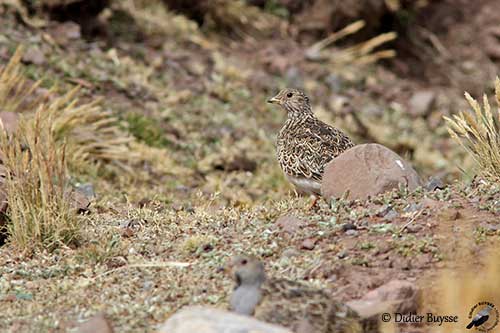
T.o. ingae
Female in the background
SUBSPECIES AND RANGE:
The Grey-breasted Seedsnipe has two subspecies.
T.o. ingae is found in the Andes from N Peru through W Bolivia to N Chile and NW Argentina.
The male of this race has smaller wings and tarsi.
T.o. orbignyianus (described above) occurs in the Andes from NC Chile and NW Argentina S to Tierra del Fuego.
HABITAT:
The Grey-breasted Seedsnipe frequents Andean bogs, puna wetlands and grassy riverbanks, between 500 and 5,000 metres of elevation. It favours areas with low vegetation of cushion plants and short grass along highland bogs.
This species occurs between 3,400 and 5,000 metres in Peru, whereas in S of the range, it breeds usually above 1,000 metres, although it may occur around 400 metres in extreme S.
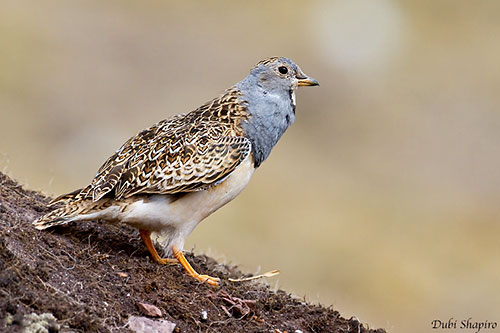
CALLS AND SONGS: SOUNDS BY XENO-CANTO
The Grey-breasted Seedsnipe gives deep “wuk-wuk” in flight, but when flushed, it produces a rasping “bzeep”. A sharp “pik-pik” can be heard when the bird is excited.
Within small flocks, the birds communicate with a melodious cooing “póoko póoko” repeated 2-3 times per second and for up to five minutes. This song is also given during the display flights at dusk and dawn.
BEHAVIOUR IN THE WILD:
The Grey-breasted Seedsnipe feeds mainly on plant matter such as buds and leaf tips of herbs and succulent plants. It uses its sharp bill to cut and pull off buds and pieces of plants.
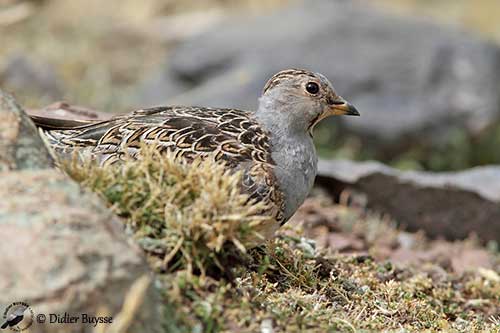
The Grey-breasted Seedsnipe is territorial and fights between males may occur, during which they can be seen perched on rocks. The territorial defence involves the male performing a wide, circular flight display up to 8-10 metres above the ground, while uttering its territorial cooing song. The flight is followed by a shallow glide on downcurved wings.
This species nests on the ground in a well-hidden site.
When disturbed, the bird often crouches motionless, protected by its cryptic plumage. It bobs the head vigorously when alarmed, while giving a distinctive, monotonous “pik-pik” call.
The Grey-breasted Seedsnipe is mainly sedentary. However, some populations from Tierra del Fuego suffering severe winter weather usually move to lower elevations.
The Grey-breasted Seedsnipe is agile in flight. When flushed, it dashes off with zigzag flight pattern and rapid, shallow wingbeats.
This species also runs quickly and easily, even with fairly short legs.
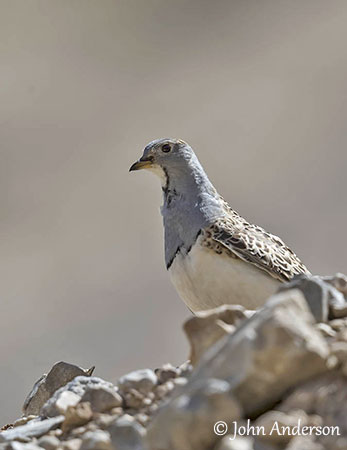
REPRODUCTION OF THIS SPECIES:
The breeding season is poorly known, but eggs are reported in October-November and January-February, probably depending on the range.
The Grey-breasted Seedsnipe is solitary nester. It nests on the ground, in clump of grass or vegetation, and often near water. The nest is protected from predators and bad weather by stones and shrubs.
The female lays 4 pinkish-white eggs with grey or brown markings. The chicks have a complex pattern of dark bands and dense white tips to down feathers.
No more information.
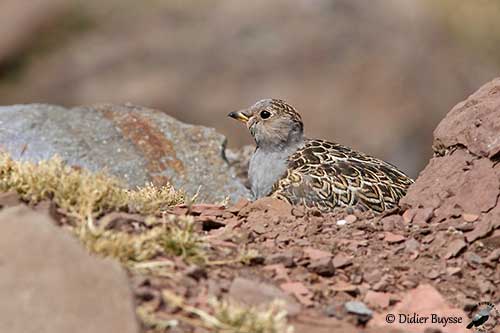
PROTECTION / THREATS / STATUS:
The Grey-breasted Seedsnipe is vulnerable to destruction and loss of its habitat, caused by human activities, especially in Andean wetlands.
However, most of the habitat is in remote, inhospitable areas and appears secure. The species also occurs in several protected areas within the range.
The population, suspected to be stable, is estimated to number 10,000/25,000 individuals, roughly equating to 6,700/17,000 mature individuals.
The Grey-breasted Seedsnipe is not globally threatened and currently evaluated as Least Concern.
